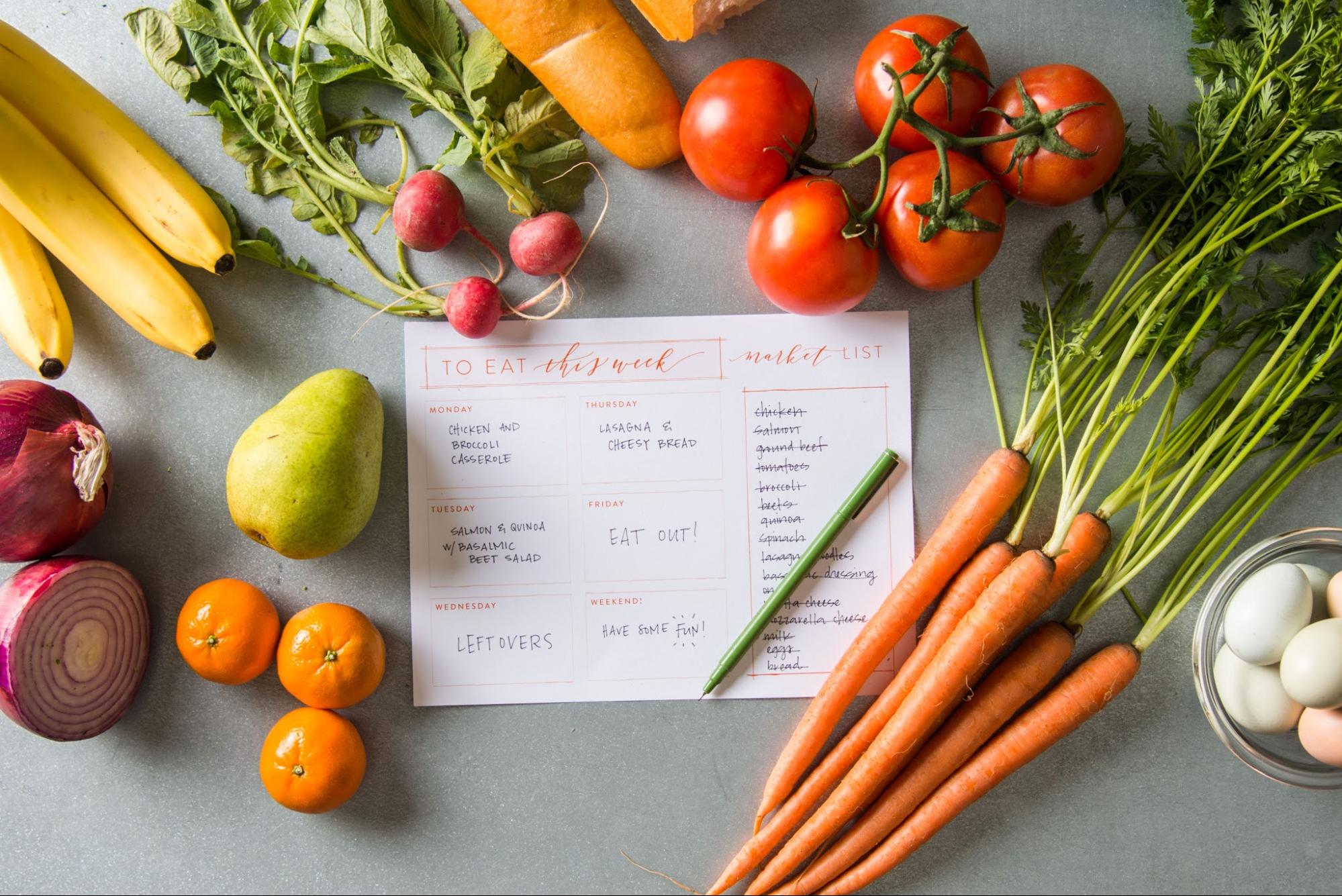My husband and I have a standing Saturday night date. Dinner out? I wish. No, after the kid has gone to bed, when the hectic chore-filled week nights have taken a brief pause, we sit down and talk about dinner – specifically what we will be making the following week. Sure, sometimes it happens Friday evening, sometimes even early Sunday morning, but we always make a point to do it.
Taking the time to plot out what you’re planning to cook is smart for any number of reasons, including that it saves you time, money and stress. This task has practically morphed into a lifestyle, with cookbooks, blogs and newsletters devoted to the topic. You can take the concept as far as you want, but at its core, meal planning (or meal prep) is just that: planning. Simple, right?
If this year you’re resolving to cook more often and more efficiently at home, here are a few achievable tips for getting started.
Have a list of your go-to dishes.
Years ago, in the pre-kid times, when we had more leisure time than I ever realised, my husband and I created a “what’s for dinner” spreadsheet. It includes such details as type of cuisine, who makes it and whether it is doable on a week night, which was easier back then. You don’t need to get too fancy or even update it every time you try a new dish (if you do, more power to you), but the simple exercise of a brain dump of at least some of the dishes in your repertoire can be exceedingly helpful when it comes time to picking what to make. That way, you won’t feel like you’re starting from scratch every week, and you may be reminded of old favourites you’d forgotten.
Shop smartly
Once you make your list of dishes, survey the ingredients you have on hand and then compile a list of what you need. Schedule a time to shop for the week, whether it’s in-store, curbside or delivery. That way, you make sure you get what you need before you need it and won’t have to make multiple runs to the store. When you’re unpacking, place your groceries where you know you’ll find them. I even like to group together ingredients from the same recipe to cut down on time spent rummaging around for stuff.
Make use of your freezer
Look, I am always going to carve out room for ice cream and other sweet indulgences in my freezer. But devoting as much space as I can to things that will make my dinners easier is a priority. Try to include a mix of ready-to-eat items, such as burritos or soups, and ingredients that can be used for quick, flexible meals, such as cooked beans or pesto.
And how about convenience foods? I’m giving you permission to have your favourite store-bought frozen meals on hand every once in a while. When you’re planning, look ahead at your week for nights when you know you may be otherwise tied up and peg them for a from-the-freezer meal. Make note if you need to pull something out to thaw in the fridge overnight and set a reminder on your phone to do so.
Stock the pantry
This is the corollary to my freezer advice. Make sure your cabinets are stocked with versatile ingredients that can be used in any number of ways depending on what you feel like cooking. At the top of my list would be canned tomatoes (diced and crushed), dried pasta, dried and/or canned beans and grains (rice, barley, etc.). Extra points if you keep a running inventory somewhere.
Set aside a night off
If your budget and diet allow, plan for one evening a week when you’re off the hook for cooking. This helps relieve some pressure and also supports your local restaurants in a challenging time. Knowing you’ve already got your night off booked can be a motivator to power through the other six days of dinners. When your break rolls around, you’ll have earned it.
Source:iol









